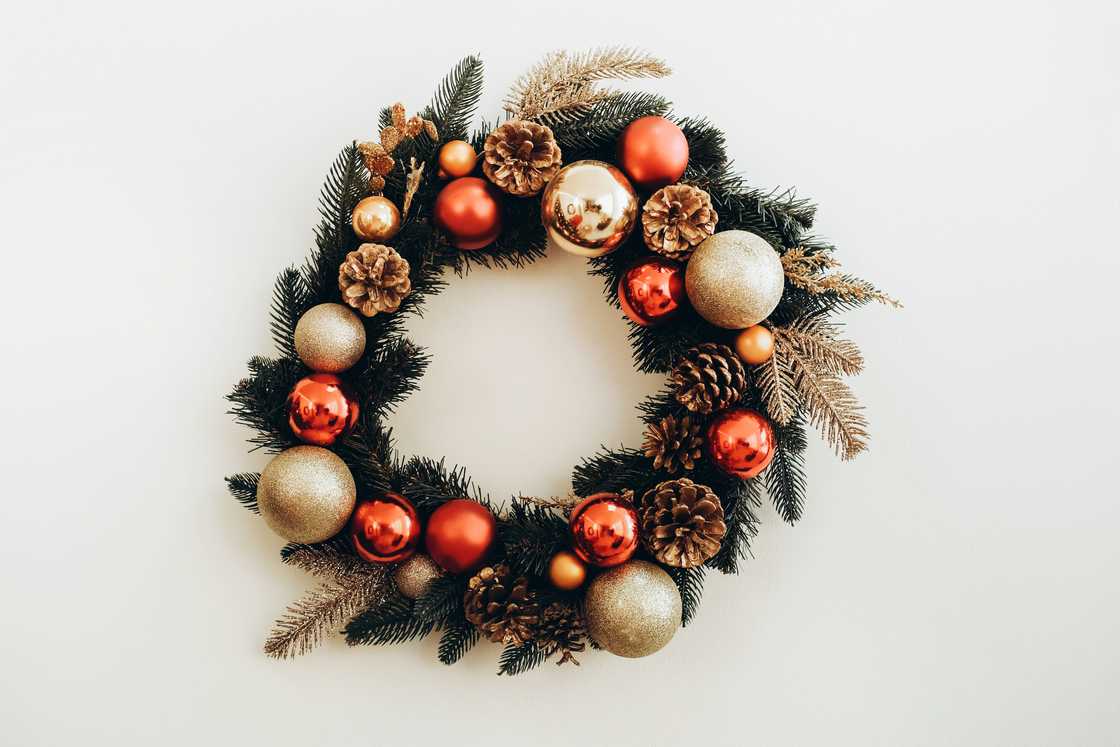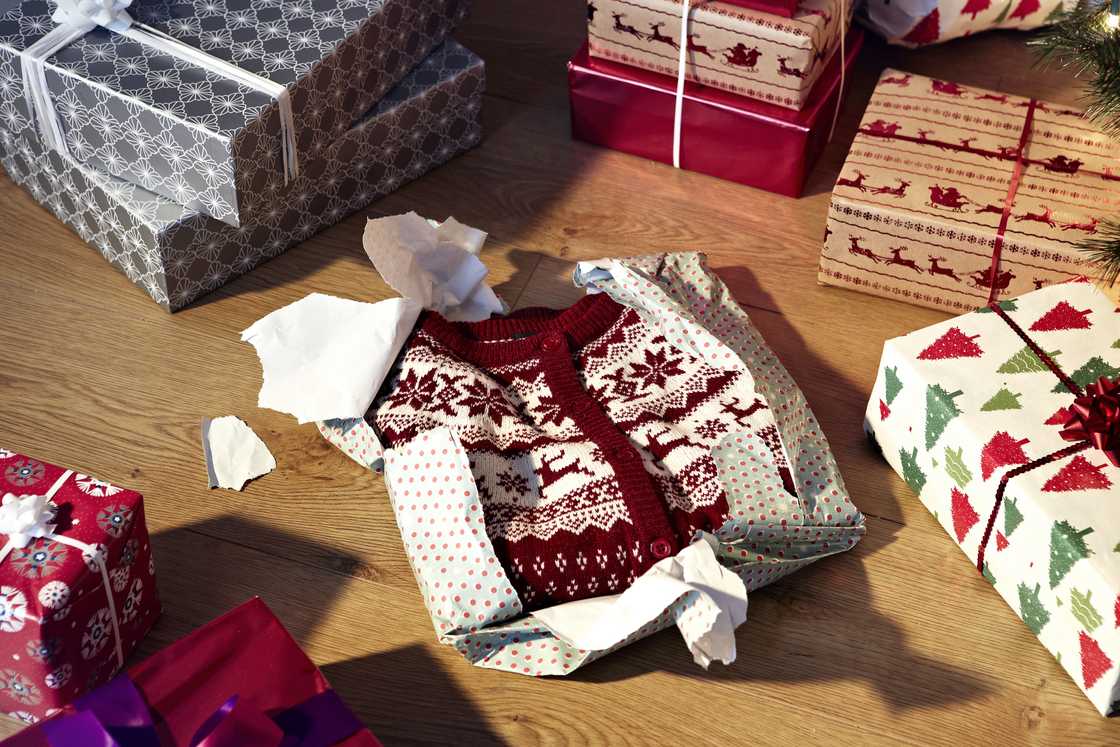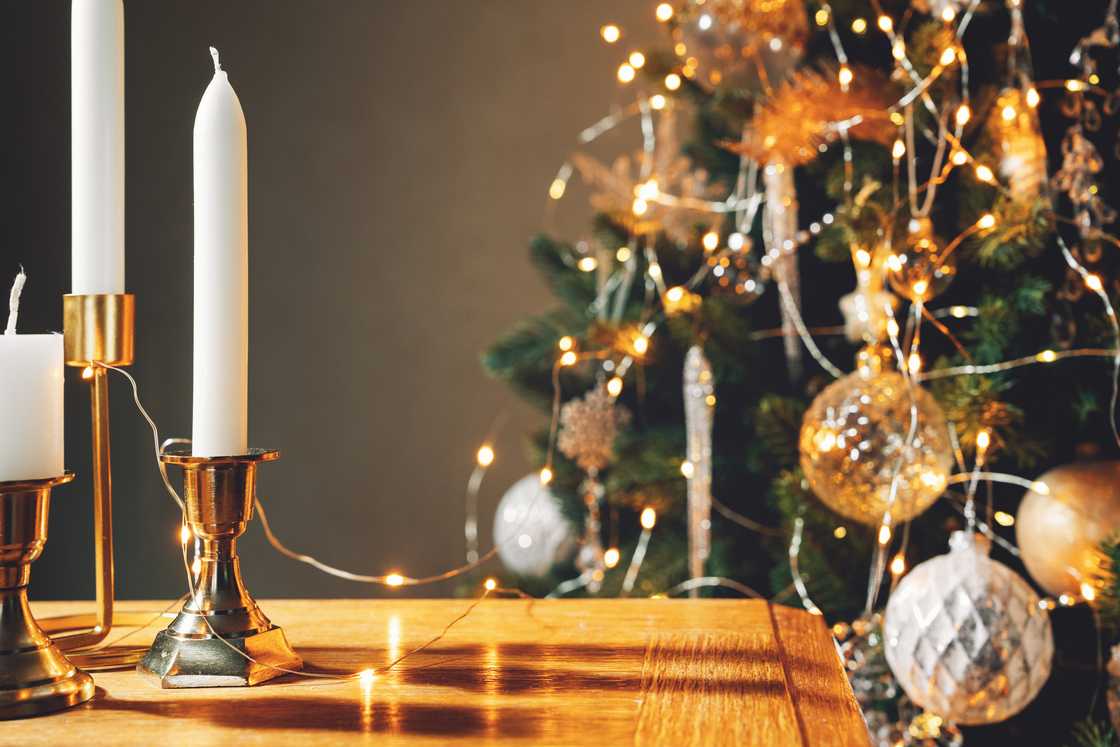The top 10 symbols of Christmas and their meanings
Christmas celebrations are known to be colourful traditions, each carrying deep symbolism. From vibrant poinsettias to shimmering bells, symbols of Christmas, like the stars, create a rich tapestry that connects you to the holiday's origins. These symbols brighten homes and inspire reflection on themes of love, hope, and faith in Christ Jesus.

Source: Getty Images
TABLE OF CONTENTS
Amid the excitement of the holiday season, Christmas decorations are everywhere, adding to the festive joy. But have you considered how these symbols of Christmas can connect you with the season's true meaning? By reflecting on them thoughtfully, they can remind you of Jesus Christ, just as Christians have used them to celebrate His spirit for centuries.
Symbols of Christmas and their meanings
Exploring the symbols of Christmas and their meanings adds depth to holiday celebrations. You will be amazed by the traditions behind these symbols and how far they go. Here are the top 10 symbols and their meanings.
1. Wreaths

Source: Getty Images
Wreaths are beloved symbols of Christmas, representing the season's spirit with their timeless circle of greenery. In ancient Northern Europe, pagans believed the sun was like a wheel moving away during winter. They decorated their homes with green, circular wreaths to attract the sun back.
Wreaths are crafted from evergreens like pine or holly. Their circular form often symbolises eternity. When placed on doors or windows, wreaths serve as a welcoming gesture, inviting the Christmas spirit to bring joy into your home. When Christianity spread, these wreaths symbolised God's eternal love and the salvation brought by Jesus.
2. Christmas tree

Source: Getty Images
The evergreen Christmas tree tradition dates back to 16th-century Germany. Long before Christ's birth, evergreen trees held special significance, symbolising hope and renewal amid winter's barrenness.
Because of Jesus, who offers eternal life, evergreens can represent Him and His gift to people. Martin Luther is said to have brought an illuminated tree indoors, inspired by stars shining through evergreens, a widespread practice.
3. Candy canes

Source: Getty Images
Candy canes are among the symbols of Christmas often seen adorning Christmas trees during that season. Since 1670, people have used candy canes to keep children quiet during church services. A candy cane symbolises the shepherds' staffs that guided sheep. This reminds Christians of Jesus, the Good Shepherd, who gently leads His people to peace and safety.
4. Star tree-toppers

Source: Getty Images
Star tree toppers are iconic Christmas symbolic images that cast radiant lights all over the house. The stars crowning the Christmas tree trace back to the Star of Bethlehem, symbolising the light that guided the Wise Men to Jesus.
These tree toppers have evolved and are crafted from metal, glass, and fabric. Beyond their spiritual meaning, stars represent hope, casting a cosy glow over holiday celebrations and reflecting diverse cultural artistry.
5. Christmas gifts

Source: Getty Images
Christmas holds various meanings for people, from gift-giving and decorating to sharing meals and attending events. While these traditions bring joy, Christians recognise that the true essence of Christmas began over 2,000 years ago in Bethlehem. People exchange presents to honour the Wise Men's gifts, celebrating Jesus Christ's birth as God's precious gift to humanity.
6. Decorating with lights and candles

Source: Getty Images
Lights symbolise Jesus's joy and brightness, often used to combat the dark winter season. The cherished Christmas traditions—on trees, in homes, and candlelit gatherings—symbolise Jesus Christ as the Light of the World.
These lights inspire Christians to shine for others and guide them to Christ. For centuries, candles have brightened the season, representing the star at Jesus's birth. Before electric lights, candles even adorned Christmas trees.
7. Christmas stockings

Source: Getty Images
It may seem odd to put treats in a sock, but the tradition of Christmas stockings has roots in an old legend. Long ago, a poor man couldn't afford dowries for His three daughters, making marriage difficult.
Bishop Nicholas wanted to help, so he secretly tossed three gold balls into their stockings hung by the fire. The tradition of hanging stockings is tied to a legend where Saint Nicholas secretly left gold in stockings to help a low-income family. This act of kindness enabled them to marry. Stockings remind people of Jesus Christ's example of selfless service.
8. Christmas holly

Source: Getty Images
Holly is a popular choice for Christmas decorations, known for its deep green leaves and bright red berries. Its spiky leaves symbolise protection, while the vibrant colours represent hope and joy. With sharp leaves and red berries, Holly recalls the crown of thorns Jesus wore and the bloodshed at His crucifixion.
9. Poinsettias

Source: Getty Images
In Mexican folklore, poinsettias were a humble gift that miraculously bloomed into vibrant flowers, symbolising the spirit of giving. The flower blooms in winter, like evergreens, and symbolises new life.
Its star-shaped leaves represent the star guiding the Wise Men to Jesus. Red poinsettias remind Christians of the blood Christ shed for them, while white poinsettias symbolise His purity.
10. Christmas bells

Source: Getty Images
For centuries, bells have joyfully signalled the start of the Christmas season. Traditionally, they have been Christmas decorations with meanings that represent the angelic announcement of Christ's birth.
According to the Gospel of Luke, angels appeared to shepherds, praising God and proclaiming glory to God in the highest, and on earth, peace and goodwill toward men. Bells echo this religious message of peace, hope, and celebration, reminding people of the joy of Christ's arrival.
How many symbols are there for Christmas?
Christmas has various symbols, each with its own meaning. Common ones include the Christmas star, evergreen tree, and bells, which herald the season's joy.
Other symbols, such as holly, wreaths, candy canes, and candles, represent hope, love, and the light of Christ. Together, dozens of Christmas symbols enhance the holiday's festive spirit and more profound, timeless messages.
What is the universal symbol of Christmas?
The universal symbol of Christmas is the Christmas tree. The tree is known to host most of the other Christmas symbols, making it a significant part of the festive season.
What do Christmas bows symbolise?
Bows and ribbons represent unity. Just as a bow is tied and a ribbon is wrapped around a gift, people should be bound together in brotherhood and embrace one another with love, mirroring the example of Christ, whose birth Christians honour during Christmas.
The symbols of Christmas enrich the holiday season, offering more than just festive decorations. Each symbol, whether the wreath, Christmas tree, or candy cane, connects deeply to the birth of Jesus Christ. As you embrace these traditions, they enhance your celebrations and invite you to reflect on the true spirit of Christmas.
Yen.com.gh published an article about the best engagement gifts for a newly engaged couple: Thoughtful and practical ideas. Engagements are happy occasions full of enthusiasm and optimism for the future.
It's common to offer emotional congratulations through meaningful engagement gifts. Engagement gifts are also a personal and meaningful way to commemorate a newly engaged couple's affection. Read on to learn more about this topic in the post.
Source: YEN.com.gh







